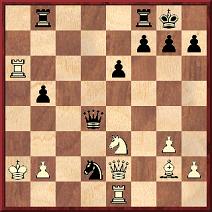
When contacting us by e-mail, correspondents are asked to include their name and full postal address and, when providing information, to quote exact book and magazine sources. The word ‘chess’ needs to appear in the subject-line or in the message itself.
| First column | << previous | Archives [14] | next >> | Current column |

Black to move.
Although this position appeared in a Reinfeld book, it may nowadays be regarded as ‘unknown’. On pages 187-188 of How to Play Chess Like a Champion (New York, 1956) Reinfeld referred to ‘a very beautiful series of attacking moves in a game between two amateurs’, whom he named as Gestaldi and Guisti.
Play continued (with Reinfeld’s punctuation):
1...Qb6!! 2 Ra3 b4 3 Ra4 Qd4 4 Ka1 Rfc8! 5 Rd1
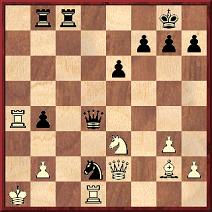
5...b3!! 6 Ra3 Rc2!! 7 White resigns.
The complete game (1 d4 d5 2 c4 c6 3 Nf3 Nf6 4 Nc3 dxc4 5 a4 Bf5 6 Ne5 e6 7 f3 Bb4 8 e4 Bxe4 9 fxe4 Nxe4 10 Bd2 Qxd4 11 Nxe4 Qxe4+ 12 Qe2 Bxd2+ 13 Kxd2 Qd5+ 14 Kc2 O-O 15 Nxc4 b5 16 Ne3 Qc5+ 17 Kb1 Nd7 18 g3 Nb6 19 axb5 cxb5 20 Bg2 Rab8 21 Rc1 Qe5 22 Rxa7 Nc4 23 Re1 Qd4 24 Ra6 Nd2+ 25 Ka2 Qb6 26 Ra3 b4 27 Ra4 Qd4 28 Ka1 Rfc8 29 Rd1 b3 30 Ra3 Rc2 31 White resigns) is in the occasional database, listed as having been played in the 1955 Italian championship. However, no such event took place. From page 347 of Storia degli Scacchi in Italia by A. Chicco and A. Rosino (Venice, 1990): ‘La federazione nel 1955 non riuscì ad organizzare il campionato italiano ...’ The same book (page 430) mentions that Angelo Giusti (not ‘Guisti’) won the seventh Italian correspondence championship (1953-55), whereas the victor in the eighth such event, in which Giusti also participated, was Vincenzo Castaldi. About any player named ‘Gestaldi’ we know nothing, but page 422 of the Chicco/Rosino book gives the results of a 1933-34 correspondence tournament in which Gastaldi of Novara and Giusti of Lucca finished third and fifth respectively.
Which chess writer wrote an openings monograph with the title ‘Roy Lopez’ on the front cover?
Occasional C.N. items refer to chess figures who have penned non-chess books, and one of the most successful nowadays is William Hartston, with several works on general ‘trivia’. The best of all, in our view, is his 2005 volume What’s What (subtitle: ‘The Encyclopedia of Pointless Information’). Chess has a brief entry, but elsewhere we learned that ‘one ounce of cress boiled down will produce enough cyanide to kill two mice’; that ‘forty is the only number which, when spelled out in English, has its letters in alphabetical order’; that ‘when [George I of England, who did not speak English,] needed to communicate with his prime minister, Robert Walpole, they spoke Latin’; that ‘there are no reptiles, amphibians or poisonous animals in Iceland’; that ‘Paraguay is the only country with a national flag that is not the same on both sides’; that ‘all polar bears are left-handed’; and that ‘in 1812 ... February had 30 days in Sweden’.
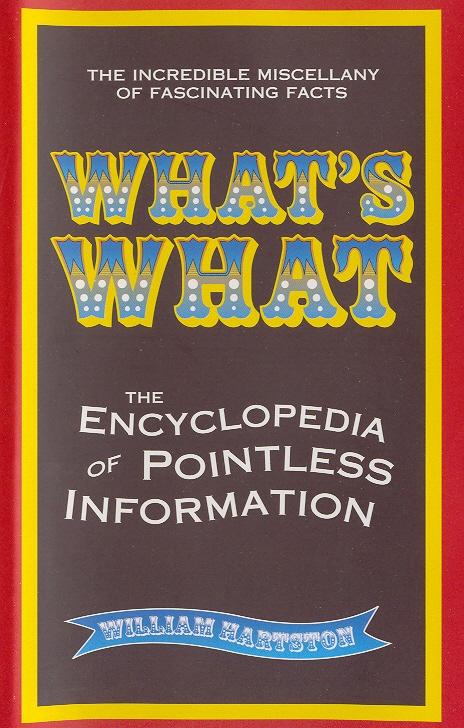
In an article on pages 209-210 of Chess Life, July 1961 the violinist Louis Persinger wrote:
‘I do believe that musicians have had a very special hypnotic fascination for the 32 little figures and have always been very willing slaves to those little characters’ inexhaustible intrigues and pranks.’
Regarding Persinger (and David Oistrakh) see page 129 of A Chess Omnibus. C.N. 3722 reproduced Persinger’s extensive inscription in one of our copies of The Golden Treasury of Chess by Francis J. Wellmuth, and here we add that on the first page of the Index of Players Persinger wrote ‘I’ve played against – ’ and then added ticks alongside these names in the index: W. Adams, Alekhine, Battell, S. Bernstein, Borochow, Capablanca, Chernev, Dake, Denker, Donovan, Fine, Fish, Fonaroff, Fulop, Grabill, Hanauer, Helms, Hidalgo, Horowitz, Kashdan, Koltanowski, Korpanty, Ed. Lasker, Em. Lasker, Marshall, Platz, Polland, Reinfeld, Reshevsky, H. Steiner, Tenner, Testa, Ulvestad and Woskoff.
From page 97 of Chess World, May 1958:
‘Nearly every one of the world’s leading violinists has been a chessplayer, and indeed, a majority of violinists of any note at all.
Kreisler always carried a travelling chess set for playing over interesting games. Go through a list of the great ones from Kreisler to Oistrakh and we doubt if you can name one non-chessplayer. As for Oistrakh, he is a first-category player in the USSR.’
Yehudi Menuhin’s enthusiasm for chess has been widely reported, our first reference being page 250 of the November 1944 BCM, which gave one of his three games against Aird Thomson. In the photograph below Menuhin is watching a game between Oistrakh (left) and Persinger:
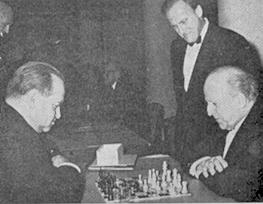
Mischa Elman’s acquaintance with Edward Lasker was mentioned on
pages 181-182 of A Chess Omnibus, and below is a
photograph of Elman from page 302 of The Strand Magazine,
September 1906:
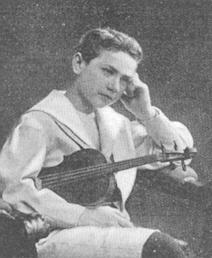
Chess historians and bibliophiles have to reconnoitre not only the majestic boulevards but also the squalid backstreets. Two feature articles recently added to our Archives illustrate this stark contrast: an appreciation of one of the best-researched chess books ever published and an exposé of an outlandish publishing scandal.
From pages 98-99 of Black is OK Forever! by A. Adorján (London, 2005):
‘Watch the errors. Yes, there are some really persistent ones which remain undetected for several decades. I’m not talking about the mistakes that fill the trash written on “opening theory” by the dozen. That’s what I call “fortnightly books”. Here is how to produce them: take three existing “works” on your subject, mix them up a little bit, add a lot of fresher games (don’t forget to steal the annotations), and finally – to make it look better – put in something analysed by your latest Fritz (or whatever). That’s all. One gets the impression that those who have already read at least one chess book feel an irresistible urge to write one as well. No wonder Timman said already in the early 1980s: “95% of opening theory books are rubbish.” Unfortunately, the time that has passed since failed to prove the opposite.’
Jan Timman (Amsterdam) informs us:
‘Adorján’s quote is puzzling for me. I don’t recall such a statement from those years. In fact, I valued some opening books that appeared in those days.’
Addition:
On 5 September 2005 András Adorján (Budapest) wrote to us:
‘95% of opening books are rubbish – many of them are made in two to three weeks by using two to three books written earlier. I also say that 95% of reviewers do not bother actually to read the book they are going to write about. Having all (?) the reviews of my newest BLACK is still OK! and BLACK is OK forever!, I can prove it too.’
We have linguistically revised the above text.
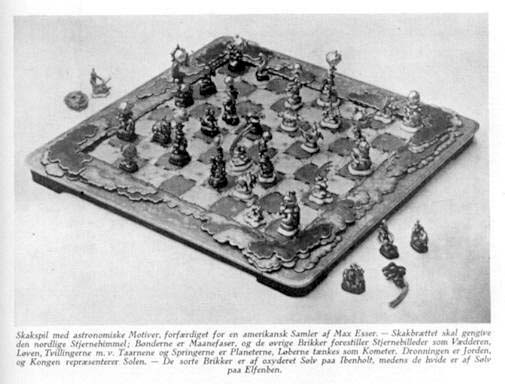
This photograph appeared on page 39 of Alt om Skak by B. Nielsen (Odense, 1943), and below is a translation of the caption:
‘A chess set with astronomy motifs, made for an American collector by Max Esser. The board attempts to depict the northern starry sky; the pawns are the phases of the Moon, and the other pieces represent constellations such as Aries, Leo, Gemini, etc. The rooks and knights are the planets, and the bishops are intended as comets. The queen is the Earth, and the king represents the Sun. The black pieces are made of oxidized silver on ebony, while the white pieces are made of silver on ivory.’
From Brad Dassat (Oldham, England):
‘Both Tim Harding’s “Mega Corr 4” CD-ROM database and the Italian website Le partite degli Italiani give the game as played by correspondence in 1953. Harding suggests that the two players were “D. Gastaldi” and “Giusti”. The Italian website goes further and names them as “Delfino Gastaldi” and “Angelo Giusti”.’
Following the death of Stoltz his brilliancy against Spielmann (Stockholm, 1930) was published on page 297 of Chess Review, October 1963 with light notes. The same page had the photograph below, with the caption ‘Stoltz (right) and E. Lundin in 1941. The Munich trophy of Meissen porcelain is worth close to $1,000.’
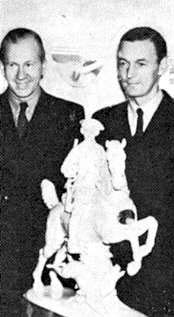
Stoltz scored a spectacular victory in the Munich, 1941 tournament (1½ points ahead of Alekhine), and as noted on page 317 of the November 1941 issue of Schackvärlden he won 1,000 Reichsmarks (approximately $400 at the time). His trophy (donated by the Ministerpräsident Ludwig Siebert) appeared in photographs on pages 3 and 7 of Kurt Richter’s book Europa-Schachturnier München 1941:
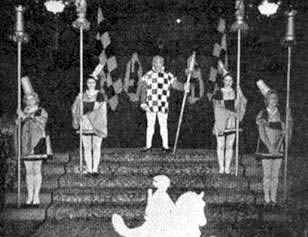
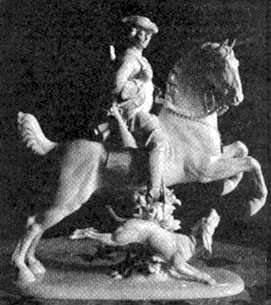
A poor-quality picture of Stoltz with his trophy was published on page 92 of Alt om skak by B. Nielsen, and page 94 had this general view of the Munich, 1941 playing hall:
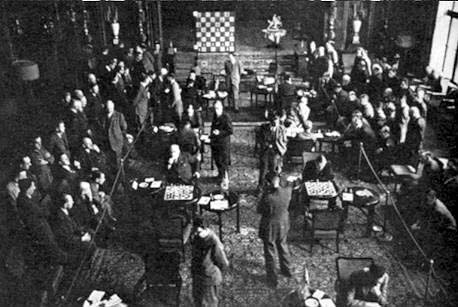
C.N. 1233 gave a translation of a report by Alekhine on the Munich tournament (from pages 187-189 of his book ¡Legado!), and we take this opportunity to reproduce some other photographs from Richter’s tournament book:
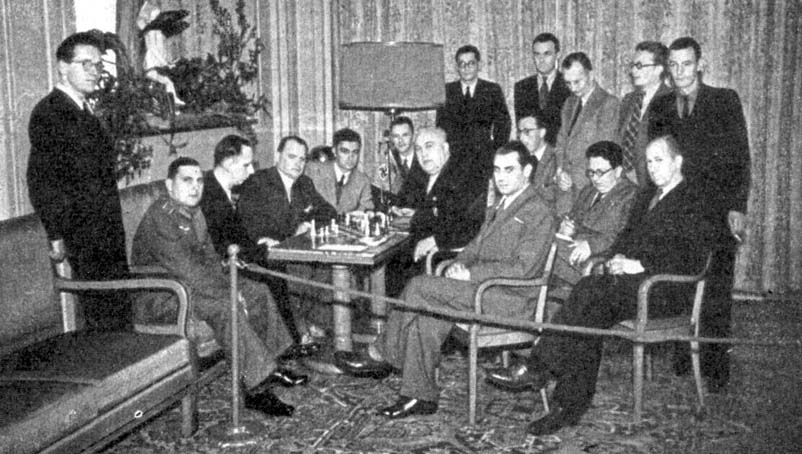
Standing on the left: P. Leepin. Seated around the table: G. Kieninger, K. Richter, A. Alekhine, P. Réthy, B. Nielsen, E. Bogoljubow, G. Füster. Seated behind: N. Cortlever, K. Opočenský, E. Lundin. Standing: I. Roháček, J. Foltys, P. Mross, B. Rabar, G. Stoltz.
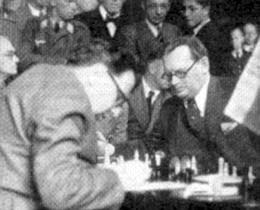
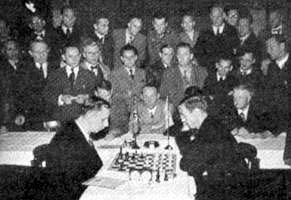
1) K. Opočenský v A. Alekhine and 2) K. Richter v G. Stoltz
Finally, a picture of Stoltz in play against B. Rabar at Munich, 1941 (with, in particular, Opočenský and Alekhine in the background), from Schackmästaren Gösta Stoltz by E.E. Böök (Stockholm, 1947):
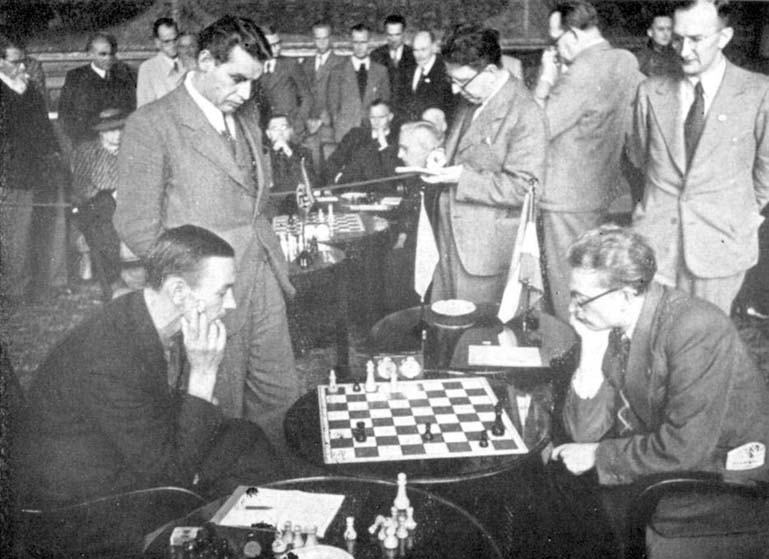
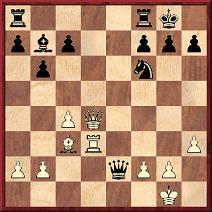
White to move.
C.N. 2202 (see page 15 of A Chess Omnibus) gave this position, which one modern source labelled ‘Ahues v Hans Müller, Berlin, 1920’. After White’s 1 Qxf6 Black resigned, whereas he could have won with 1...Qg4.
Our inability to find the position in any 1920s source was mentioned in C.N. 2202, but now we note that it was given, courtesy of the Deutsche Schachblätter, on page 111 of the Schweizerische Schachzeitung, July 1923. The heading was vague: ‘Aus einer von Meister Ahues vor Jahren gespielten Partie’.
When did Alekhine lose his world championship title to Euwe? In 1935, of course, but page 84 of a lamentable book dealt with in a feature article asserted regarding Euwe:
‘He gets very little respect when compared to the giants such as Kasparov, Fischer, and even Alekhine, whom he dethroned in their 1937 match.’
A gross error, certainly, but not unique. From page v of the Dover edition of The Development of a Chess Genius 100 Instructive Games of Alekhine by Fred Reinfeld (New York, 1959):
‘He lost the title in 1937 to Dr Max Euwe ... Two years later Alekhine recovered his title ... Thereafter he retained the title for some 18 years in all ...’
From page 18 of Reuben Fine by Aidan Woodger (Jefferson, 2004):
‘Match with Fred Reinfeld, New York, 25 July-9 August 1931. Fred Reinfeld’s papers indicate that the youngsters contested a six-game match in the late summer. Fine won three games to Reinfeld’s two, the other game being drawn. In addition to the match Fine and Reinfeld were involved in a consultation game on 17 September. Game-scores unavailable. Crosstable unavailable.’
However, we note that on pages 8-9 of the stencilled booklet A Course in the Elements of Modern Chess Strategy (Lesson V, Part II) by Fred Reinfeld and Matthew Green (New York, 1936) the following game was given (annotated by Reinfeld):
Fred Reinfeld – Reuben Fine
‘Impromptu match 1931’
Nimzo-Indian Defence
1 d4 Nf6 2 c4 e6 3 Nc3 Bb4 4 Qb3 c5 5 dxc5 Nc6 6 Nf3 Ne4 7 Bd2 Nxc5 8 Qc2 f5 9 a3 Bxc3 10 Bxc3 O-O 11 g3 b6 12 Bg2 Bb7 13 O-O Qe7 14 Rfd1 d6 15 Nd4 Nxd4 16 Rxd4 Bxg2 17 Kxg2 Rac8 18 Rad1 Rfd8 19 b4 Ne4 20 f3 Ng5 21 Qd3 Nf7 22 e4 Ne5 23 Qe2 Qc7
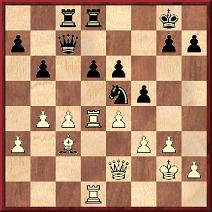
24 Rxd6 Rxd6 25 Bxe5 Rd2 26 Qxd2 Qxe5 27 Qd7 Rf8 28 Qd4 Qxd4 29 Rxd4 e5 30 Rd5 fxe4 31 fxe4 Rc8 32 c5 bxc5 33 Rxc5 Rxc5 34 bxc5 Kf7 35 Kf3 Ke6 36 Kg4 Resigns.
Calle Erlandsson (Lund, Sweden) draws attention to page 197 of the October 1941 Tidskrift för Schack, which carried the same photograph of Stoltz and his trophy as the one in Alt om skak mentioned in C.N. 3917:
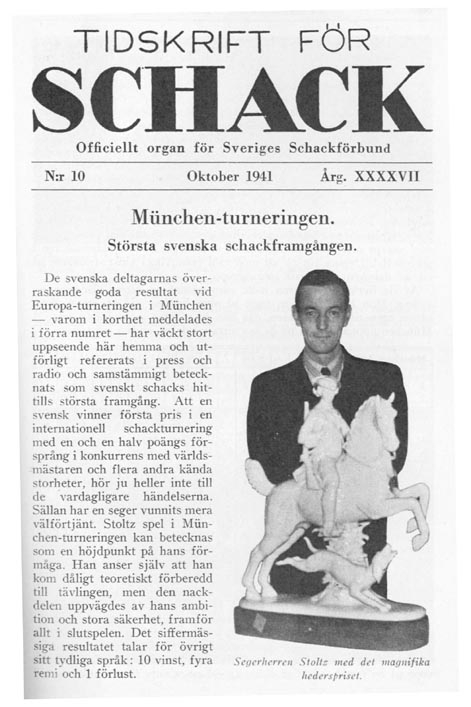
Our correspondent remarks that although the 1963 Chess Review stated that the trophy was made of Meissen porcelain, page 200 of the October 1941 Tidskrift för Schack referred to it as a piece of Rosenthal porcelain. He adds that pages 2-4 of the 1/1992 issue of Tidskrift för Schack had an article featuring Sune Stoltz, Gösta’s son. The following passage from page 2 is relevant:
‘Throughout his whole career Gösta had a hard life and he suffered illness as well as financial worries. He was forced to pawn his three Swedish Championship plaques at a pawn-shop in the Stockholm Old City. The same shop also obtained the prize from the European Championship tournament, a half-metre-high piece of great value, made of silver and marble [emphasis added here].
Sune managed to save the Swedish Championship plaques, which he has in his home, together with press cuttings.’
The feature included an interview with Sune Stoltz, who was quoted as follows:
‘Some years before Gösta’s death on 25 July 1963, I redeemed the plaques. But the statuette from Munich was already sold, probably to a collector.’
‘Where is the trophy today?’, asks Mr Erlandsson.
A little quiz question: who was the first world chess champion to become involved in efforts to include chess in the Olympic Games?
The author of the openings monograph with the title ‘Roy Lopez’ on the front cover was Fred Reinfeld. It was lesson XV in his series A Course in the Elements of Modern Chess Strategy (New York, 1936 and 1938).
This is our last call for proposals regarding the identity of the masters in this photograph:
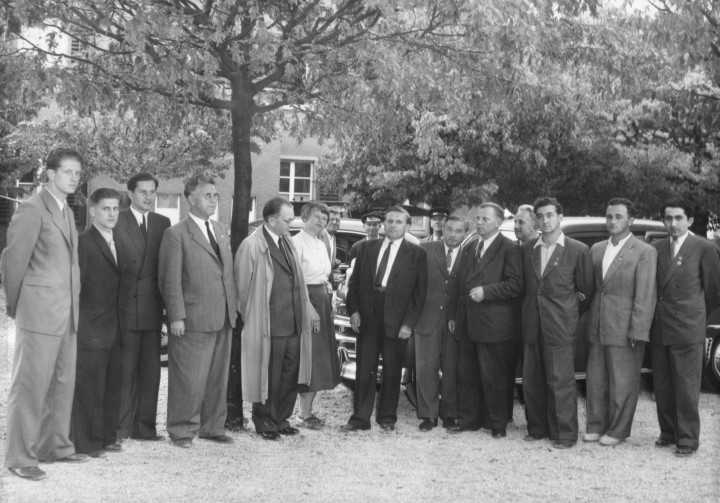
Alekhine annotated his brilliancy against Bogoljubow (Hastings, 21 September 1922) in such publications as the tournament book, the November 1922 La Stratégie and his first Best Games volume. No two sets of notes were identical. On pages 44-46 of the March 1923 Schweizerische Schachzeitung the game was given with the heading ‘D’après les commentaires de M. Aljechin dans la Nation Belge’. Can a reader provide those annotations, to enable us to see whether they too were different?
This seldom-seen caricature of Capablanca, Lasker and Alekhine was published in the Yugoslav magazine Šahovski Glasnik in 1927 and was reproduced on page 18 of B. Kažić’s book Na pervenstvo mira Matchi pretendentov (Belgrade, 1969):
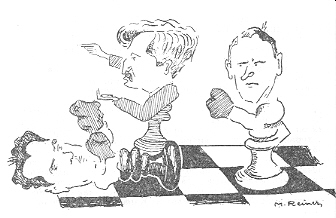
From Eric Fisher (Hull, England):
‘I am looking for a very important game from the 1911 British championship in Glasgow, between H.E. Atkins and F.D. Yates. Yates started with 6/6 and met Atkins in round 7. The game was adjourned, but Atkins won. I have tried everywhere to find the game-score, without success. It seems impossible that such an important game, between the two leading British players, should be lost. It must be somewhere.’
In an impulsive burst of munificence we offer a book prize to the first reader who sends us the four-letter English word made up of the initials of the forenames and surnames of the two players pictured below. It is likely to mean defeat for many.
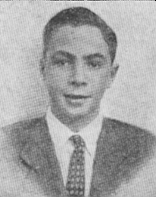
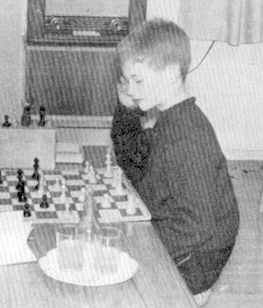
Luc Winants (Welkenraedt, Belgium) and Leonard Skinner (Cowbridge, Wales) provide Alekhine’s notes in La Nation Belge, 16 November 1922. In some respects they differ from all the other sets of annotations by Alekhine mentioned in C.N. 3925.
‘1 d4 f5 Une défense risquée, que je n’ai adoptée jusqu’à présent que fort rarement dans les rencontres sérieuses. Mais dans la partie présente je devais absolument jouer pour le gain, afin de m’assurer le premier prix, tandis qu’à mon adversaire la nullité suffisait pour obtenir le troisième. Par suite je me suis vu contraint de courir un certain risque, qui fut d’ailleurs justifié par le résultat. 2 c4 Cf6 3 g3 e6 4 Fg2 Ce fianchetto préconisé par Steinitz et Rubinstein ne me semble pas être la plus forte ligne de jeu pour les Blancs, car par les coups suivants les Noirs obtiennent une partie au moins égale. 4...Fb4+ 5 Fd2 Fxd2+ 6 Cxd2 La reprise avec la Dame suivie de Cc3 est peut-être un peu préférable. 6...Cc6 7 Cgf3 O-O 8 O-O d6 9 Db3 Cette manœuvre n’empêche pas les Noirs de réaliser leur plan, mais il est déjà difficile de proposer pour les Blancs une ligne de jeu efficace. 9...Rh8 10 Dc3 e5! Ceci est possible parce [qu’après] la prise du pion, le CD blanc sera attaqué par la Dame noire. 11 e3 a5 Il était très important d’empêcher pour un moment le coup 12 b4 comme on le verra de suite. 12 b3 Et non 12 a3 à cause de 12...a4. 12...De8! 13 a3 Dh5! Maintenant les Noirs ont obtenu une position d’attaque car les Blancs ne peuvent pas répondre à ce coup, ni par 14 dxe5 dxe5 15 Cxe5 Cxe5 16 Dxe5 à cause de 16...Cg4 et gagnent, ni par 14 b4 à cause de 14...e4 15 Ce1 axb4 etc. 14 h4 Un bon coup de défense, qui ouvre au CR de nouvelles cases et renouvelle la menace dxe5, etc. 14...Cg4 15 Cg5 Les Blancs désirent déplacer au plus vite le gênant Cavalier adverse. 15...Fd7 16 f3 Si 16 Fxc6 Fxc6 17 f3 alors 17...exd4! 18 fxg4 dxc3 19 gxh5 cxd2 etc. avec une fin de partie de beaucoup supérieure. 16...Cf6 17 f4 Déjà nécessaire vu la menace 17... f4 etc. 17...e4 18 Tfd1 Afin de protéger le pion g3 menacé par Dg4, suivi de Ch5, etc. 18...h6 19 Ch3 d5! Par ce coup les Noirs annihilent complètement les chances de l’adversaire au centre et obtiennent bientôt d’une manière inattendue l’initiative du côté D. 20 Cf1 Ce7 Préparant a4! 21 a4 Cc6 Maintenant par contre ce Cavalier peut entrer dans le jeu adverse via b4-d3. 22 Td2 Cb4 23 Fh1 Une manœuvre compliquée qui a pour but de créer des chances d’attaque du côté Roi, et qui démontre clairement l’infériorité de la position des Blancs. 23...De8! Ce coup très fort assure aux Noirs dans tous les cas un nouvel avantage : ou bien la domination de la case d5, en cas de 24 cxd5, ou alors l’ouverture d’une ligne du côté Dame après 24 c5 b6, ou enfin comme dans la partie le gain d’un pion. 24 Tg2 Ils essayent toujours de parvenir à g4 mais même cette faible chance ne leur sera pas accordée. 24...dxc4 25 bxc4 Fxa4 26 Cf2 Fd7 27 Cd2 b5! La reprise de la lutte pour la case centrale, lutte dont les péripéties aboutissent à une fin émouvante et originale. 28 Cd1 Cd3! Ce coup prépare la combinaison qui suit. Bien plus faible aurait été 28...bxc4 car le Cavalier blanc aurait enfin trouvé une bonne case à e5. 29 Txa5 Si 29 cxb5 alors 29...Fxb5 30 Txa5 Cd5 31 Da3 Txa5 32 Dxa5 Dc6 avec une attaque gagnante. 29...b4! 30 Txa8 Ou bien 30 Da1 Txa5 31 Dxa5 Da8 32 Dxa8 Txa8 et l’entrée de cette Tour dans le jeu des Blancs décide la partie. 30...bxc3!! Comme on le verra ceci est bien plus fort que 30...Dxa8 31 Db3 Fa4 32 Db1 et les Blancs peuvent encore se défendre. 31 Txe8 c2!! La pointe. 32 Txf8+ Rh7 33 Cf2 Evidemment le seul coup. 33...c1(D)+ 34 Cf1 Ce1! Menace d’un mat étouffé. 35 Th2 Dxc4 Une nouvelle menace de mat par Fb5 37 Cd2 Dc1, etc. qui force les Blancs de sacrifier sur-le-champ l’échange. 36 Tb8 Fb5 37 Txb5 Dxb5 38 g4 La seule chance d’obtenir encore un peu de jeu, qui amène une nouvelle surprise. 38...Cf3+ 39 Fxf3 exf3 40 gxf5 Forcé car si 40 g5 les Noirs obtiennent deux pions passés par 40...Cg4 etc. 40...De2!! Ce coup amène une position de problème. Aucune pièce blanche ne peut jouer sans perte immédiate. Par exemple 41 Ch3 (ou 41 Cg4) 41...Cg4!! etc.; Si 41 Th3 Cg4 et gagnent dans les deux cas. Donc après deux coups insignifiants de pion, ils devront jouer e4, ce qui mène à une liquidation immédiate avec une fin gagnante pour les Noirs. 41 d5 Rg8! Et non le coup plausible 41...h5 car les Blancs se sauveraient alors par 42 Ch3-g5+-f3. 42 h5 Rh7 43 e4 Cxe4 44 Cxe4 Dxe4 45 d6 Afin de disloquer les pions noirs car ceux des Blancs ne peuvent plus être défendus. La partie est irrémédiablement perdue. 45...cxd6 46 f6 gxf6 47 Td2 De2! Une jolie fin digne de cette partie. Les Noirs forcent une fin de pions gagnée 48 Txe2 fxe2 49 Rf2 exf1(D)+ 50 Rxf1 Rg7 51 Rf2 Rf7 52 Re3 Re6 53 Re4 d5+ 54 Abandonnent.’
Below is a photograph of Alekhine and Bogoljubow from the October 1929 Schweizerische Schachzeitung:
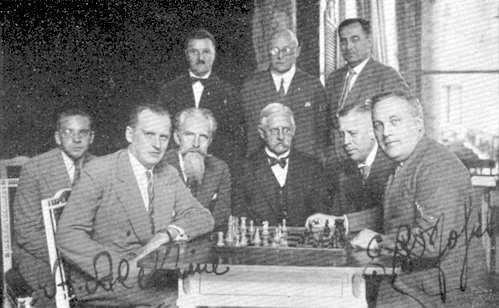
Russell Miller (Chelan, WA, USA) quotes the following passage about the engineer and inventor James Buchanan Eads (1820-87) from page 23 of Rising Tide: The Great Mississippi Flood of 1927 and How it Changed America by John M. Barry (New York, 1997):
‘He had the passion of the lonely, an intense focus on the few things he cared about. He taught himself chess, became one of the city’s [St Louis, MO] best players and engaged in simultaneous games allowing his opponents a board but playing himself without one. There was something lonely about chess as well, and brutal, and he gave no quarter.’
What more is known about Eads’ interest in chess?
Is reliable documentation available about any involvement with chess by General Tom Thumb – i.e. Charles Sherwood Stratton (1838-83). The only nineteenth-century reference we currently have to hand is on page 216 of Brevity and Brilliancy in Chess by Miron J. Hazeltine (New York, 1866), which gave the game 1 e4 e5 2 Nf3 Nc6 3 d4 exd4 4 Bc4 Nf6 5 Ng5 d5 6 exd5 Nxd5 7 Nxf7 Kxf7 8 Qf3+ Kg8 and ‘White announces mate in three moves’. The heading was ‘A Mate by General Tom Thumb (At least S. Loyd says it was.)’, and Loyd was named as the General’s victim.
Where had Loyd, or anyone else, published the game beforehand?
The cartoon and poem below come from page 244 of the December 1898 American Chess Magazine, to mark Pillsbury’s chess tour and the victory of the Republican Party in the mid-term elections:
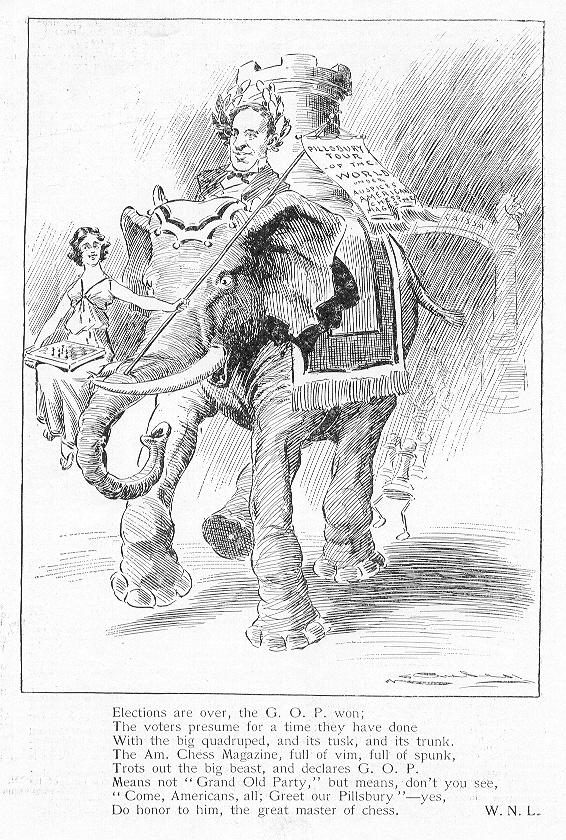
From Avital Pilpel (New York):
‘In Pal Benko My Life, Games and Compositions by Benko and Jeremy Silman (Los Angeles, 2003) Silman interviews various chess personalities who knew (and know) Benko, and Benko himself. Many of the answers deal with unverifiable private matters, but some make claims about specific chess events which it may be possible to verify or disprove.
Page 414: Ronald Gross about Bent Larsen: “Larsen... spoke 13 languages fluently”. Is this intended literally? If so, which languages?
Page 418: Ronald Gross commenting on a 1963 Piatigorsky Cup tournament game between Reshevsky and Benko:
“The assistant tournament director who was in charge of that game was Jack Moskowitz (an old time friend of Sammy’s), and Benko was winning or drawing the game. Reshevsky’s flag went down on the 38th move and the instructions were very clear: it was not up to the players to claim, it was up to the director. I saw the flag drop, but Benko was low on time and wasn’t looking at the clock. Then I looked at Jack’s face and watched him stare directly into the clock. He saw that Reshevsky had forfeited. Incredibly, he didn’t say anything. After the 38th move was played by Benko, I still thought he’d notice Reshevsky’s fallen flag on the 39th (Reshevsky was very aware that his flag had fallen), but Jack still kept quiet.”
Is there independent evidence of this?
Page 642: A helpmate in three composed by Benko:
It “left Botvinnik, Keres and Geller baffled” (page 639) and “baffled many strong players” (page 642). Page 419 quotes Gross, presumably about the same problem: “It turned out to be one of his most successful helpmate problems, and players such as Botvinnik, Keres and Geller were not able to solve it.” Is there more information about the circumstances when these masters were shown the problem and of their failure to solve it? It was first published in the Berliner Morgenpost in 1970, according to the book (page 642).’
As regards the Reshevsky v Benko game (1 c4 Nf6 2 d4 g6 3 g3 Bg7 4 Bg2 c5 5 d5 d6 6 Nc3 a6 7 a4 O-O 8 Nf3 e5 9 O-O Ne8 10 e4 Bg4 11 Qb3 Bxf3 12 Bxf3 Nd7 13 Bg2 a5 14 Nb5 Ra6 15 Bd2 Nc7 16 Ra3 Nxb5 17 Qxb5 Ra7 18 Bh3 Nf6 19 f3 Qc7 20 Rb3 Rfa8 21 Qb6 Qxb6 22 Rxb6 Bf8 23 Ra1 Be7 24 Ra3 Bd8 25 Rxd6 Ne8 26 Rd7 Nf6 27 Rd6 Ne8 28 Rd7 Nf6 29 Rxd8+ Rxd8 30 Bc3 Nd7 31 Rb3 f6 32 Rb5 Kf7 33 b3 Ke7 34 Bxa5 b6 35 Bxb6 Nxb6 36 Rxb6 Rd6 37 Rb5 Rc7 38 Kf2 Ra6 39 Ke3 Kd6 40 Kd3 Rca7 41 Bc8 Resigns), the photograph below appeared on page 255 of Chess Review, August 1963:
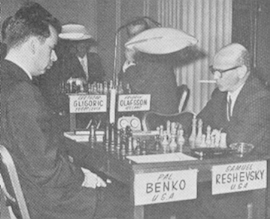
We note, in particular, that page 167 of the July-August 1963 Chess Life had, from Isaac Kashdan, a quite different account of what happened:
‘In this game too the time-limit was vital. In fact it was the subject of the first claim that required the director’s decision.
Reshevsky obtained a clear advantage in the opening. His queen and rooks marched in on the queen side, where he commenced an attack against the vulnerable black pawns.
Benko found what seemed a neat resource, giving up a pawn to trap Reshevsky’s rook. Reshevsky took a long look, walked into the situation, and after repeating moves a couple of times, gave up the rook for Benko’s bishop.
In a few moves Reshevsky justified the sacrifice when he captured two of Benko’s pawns in succession, giving him material superiority for the first time. But all this took time, and he had only seconds left.
Reshevsky made his 40th move, with the flag on his clock on the brink, but still in the up position. Benko moved immediately, pressed the lever, and Reshevsky’s flag dropped. He promptly claimed the game on a time forfeit.
Assistant directors Harry Borochow and Jack Moskowitz were on top of the play and agreed that Reshevsky was safe. Actually, if Benko wished to make a claim, he should have done so before making his own 40th move. The rules state clearly that a player cannot make any claim unless he is on the move.
A later discussion indicated that Benko had miscounted the moves and thought that only 39 had been made by both players.
When things quieted down, Reshevsky sealed his 41st move. The game was resumed at 1 p.m. Friday and Reshevsky scored the point. A second or two made the difference between winning and losing. It is all in the life of a grandmaster.’
From Sandro Litigio (Como, Italy):
‘The Gastaldi v Giusti game was given in the article “6 Campionato Italiano per corrispondenza” by Giorgio Porreca on pages 38-42 of the February 1955 L’Italia Scacchistica. Excerpts from the article (including the Gastaldi v Giusti game) were published on pages 33-35 of Campionati Italiani di scacchi per corrispondenza – Volume 1 – Fiorentino Palmiotto – Il XIII Campionato e cronistoria dei primi 12 – Quaderni tecnici 2 – A.S.I.G.C. Associazione Scacchistica Italiana Giocatori per Corrispondenza (second edition 1985). The final results of the Sixth Championship (25 January 1953 – 25 April 1954) show Angelo Giusti fourth with 7½/10 and Delfino Gastaldi ninth with 3½/10. On page 89 of the same booklet there are some short biographical notes on both players.’
Neil Brennen (Spring City, PA, USA) writes:
‘David McCullough’s 1972 book The Great Bridge has the following comment on Eads’ chessplaying, on page 181:
“In early 1870 Eads was approaching 50. He was the sort of person who liked to play chess with two or three others at a time ...”
McCullough gives no specific source for this information, but instead says he took “the general biographical background” from the Dictionary of American Biography and three other books: Florence L. Dorsey’s Road to the Sea (1947), Joseph Gies’ Bridges and Men (1963) and C.M. Woodward’s A History of the St. Louis Bridge (1881).
The same book includes, on page 156, a comment that Washington Roebling, while in Pittsburgh in 1858 overseeing the construction of a bridge, “played chess with the other boarders” at his boarding house. McCullough took this from a 2 May 1858 letter from Roebling to Charles Swan.’
The dates of Emanuel Lasker’s world championship reign, 1894-1921, are well known, but even an elementary matter like that can unhorse someone like Dimitrije Bjelica. Page 126 of his book Šahovska Čitanka (undated, but circa 1966) had the following:
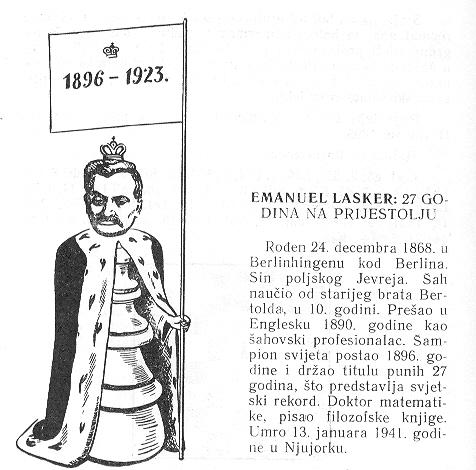
Miguel Artigas (Sabadell, Spain) writes:
‘I have been reading a comic magazine published in Cuba by Ediciones de colores; there is no publication date, but it was brought out at the time of the Olympiad in Havana (1966). This issue, wholly devoted to chess, is entitled “Capablanca la máquina de jugar ajedrez. El ajedrez cuenta su historia”, and the main story (pages 2-15) is a biography of Capablanca in comic-strip form. I would be interested to know if other chessplayers’ biographies have been published in a similar way.’
Our correspondent has provided the front cover of the publication and the first and last pages of the story:
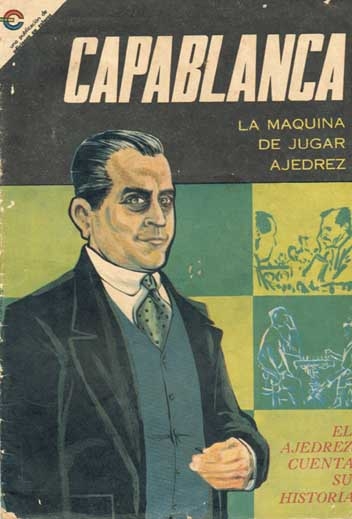
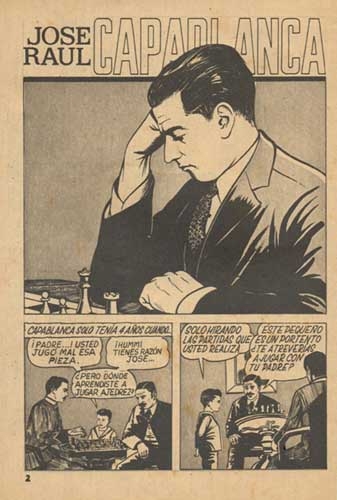
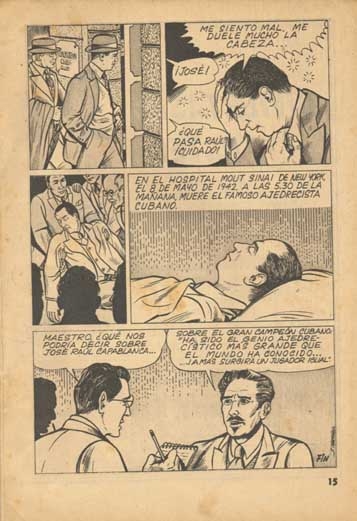
From Eric Fisher (Hull, England) come three cartoons marking the London, 1922 tournament. They were published on pages 11-13 of Tom Webster’s Annual 1922 (London, 1922).
[Correction added on 11 September 2011: the cartoons appeared in the 1923, not 1922, volume.]
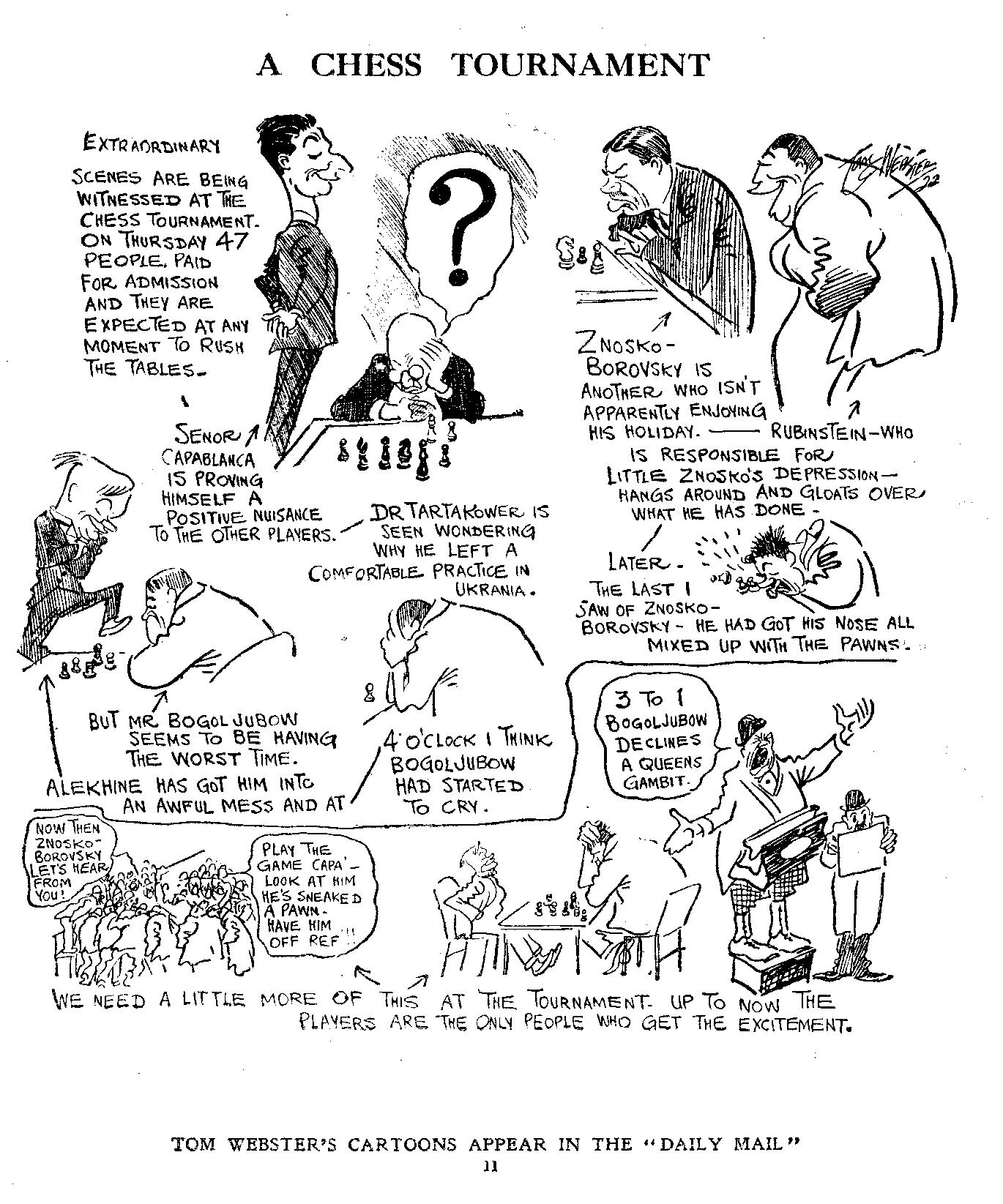
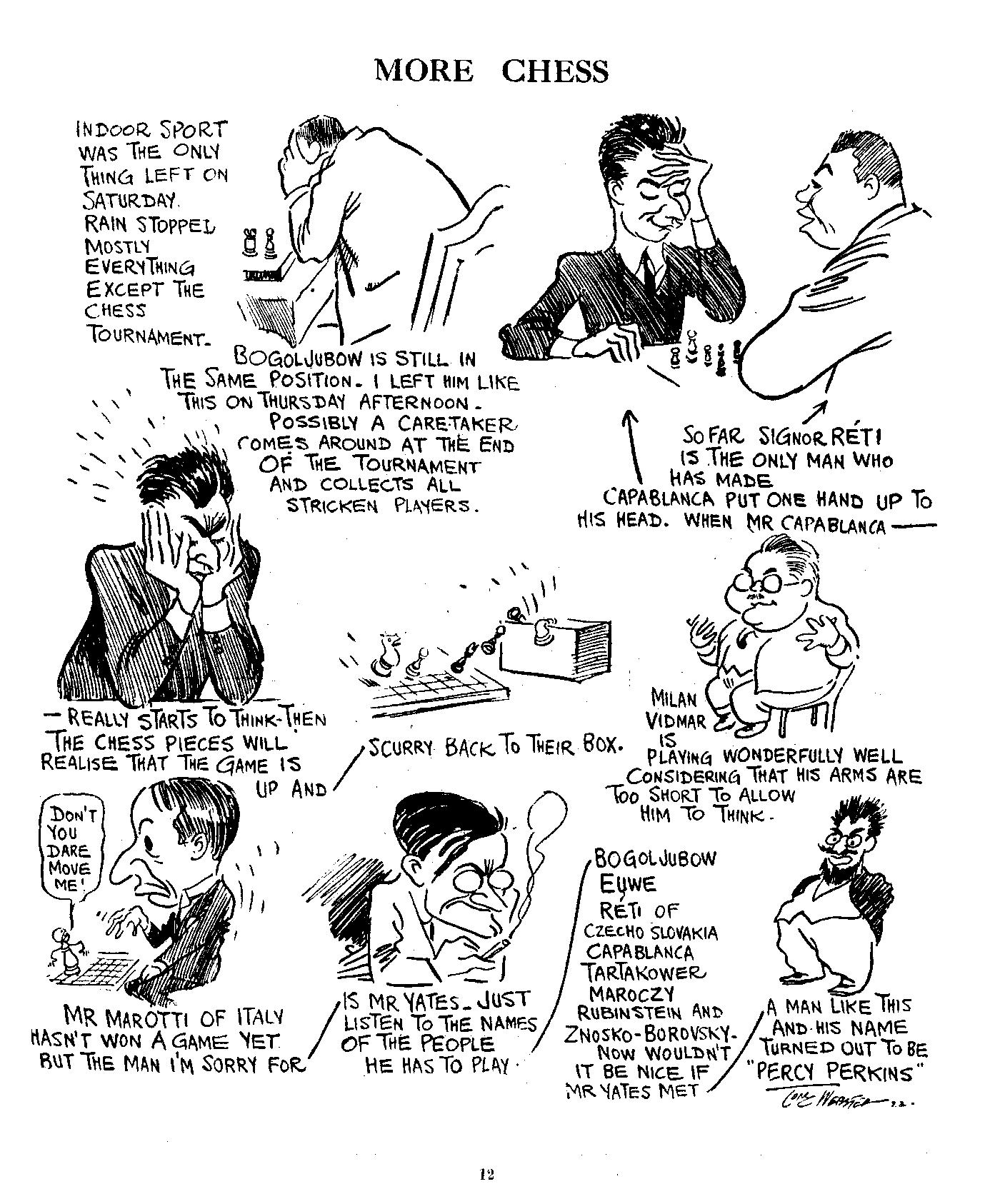
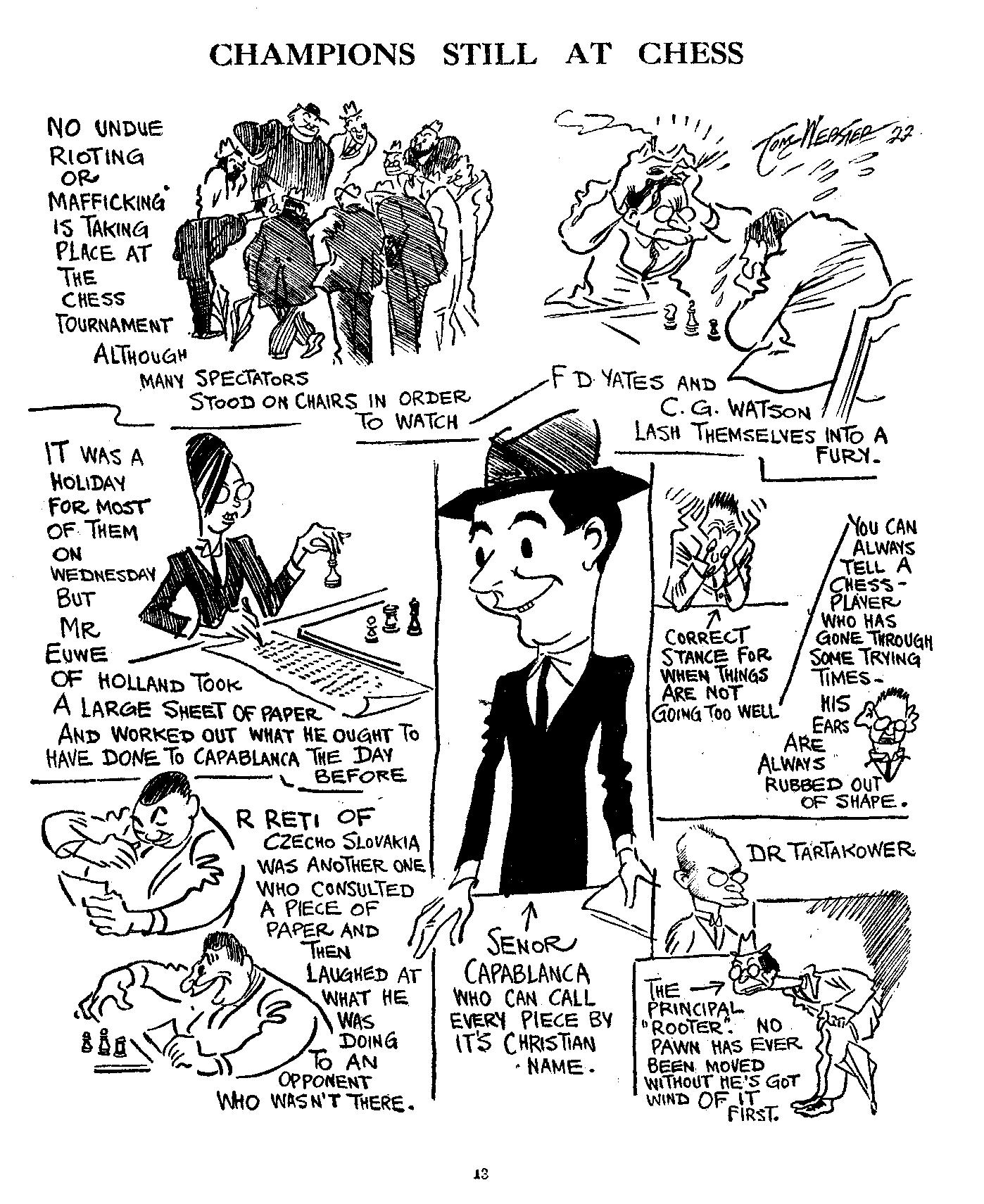
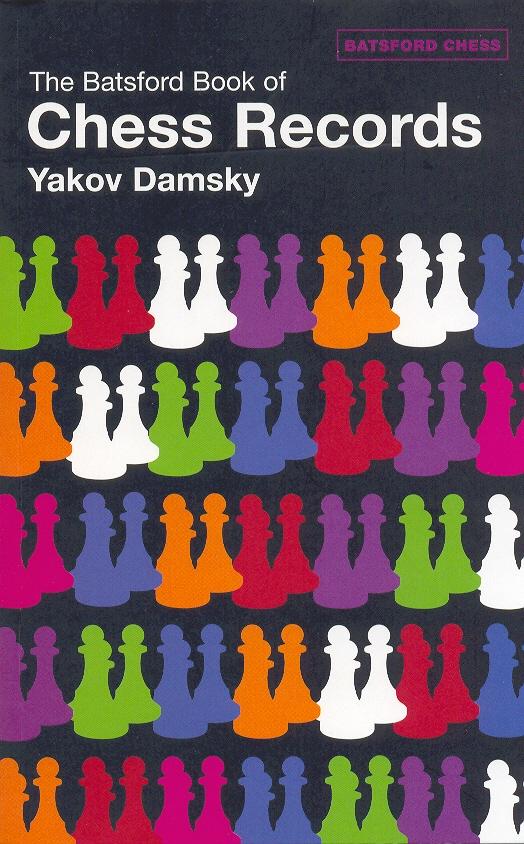
Some reviewers may extend a warm welcome to The Batsford Book of Chess Records by Y. Damsky (London, 2005), given that it looks detailed (303 pages), covers a wide range of topics (by treating the term ‘record’ very broadly) and is obviously in a higher league than most of Batsford’s output (usually threadbare, generally careless and frequently dishonest) from the 1980s and 1990s.
It will, though, be surprising if Damsky’s book is treated favourably or indulgently by discerning critics. Its first defect is obvious enough: poor structure and organization (only four parts/chapters), exacerbated by inadequate indexing. Secondly, the author provides ‘information’ without, in most cases, giving any indication as to its provenance. Thirdly, he demonstrates insufficient knowledge of chess lore to tackle what would have been, even for a fine writer, a demanding project.
A few illustrative examples follow. A game on page 39 is headed ‘Marshall – N.N., New York, 1940’; this is the famous occurrence of 14 consecutive pawn moves in the opening and early middle-game. When the game (played in the Marshall Chess Club Championship) was published on page 45 of the March-April 1940 American Chess Bulletin, Black’s name was given: Rogosin. The name also appeared on pages 230-231 of Marshall’s autobiographical games collection. How can it be unknown to Damsky? And (regarding pages 130-131) how can he not know, after everything written on the subject, that Lasker and Janowsky played only one world championship match? On pages 273-274 he relates the Capablanca chess/billiards yarn, unaware that the whole thing was a hoax (see Chess Explorations, pages 179-182).
On page 182 Damsky writes about the Alekhine v Nenarokov hoax, using material from C.N. (see pages 194-195 of Chess Explorations) without acknowledgement or care. Another passage, on pages 289-290 of his book, leaves us mystified:
‘In the opinion of Chess Notes, another English magazine, the record for incompetence could go to the author of a handbook for beginners, who “taught” that “the game is drawn if one of the players repeats the same move three times within an hour”. In a section on “The Endgame”, he advised his readers to advance their pawns to queen, if possible all in a bunch.’
Where does that come from?
Elsewhere, however, Damsky poses as Mr Rigour. From page 287:
‘The most voluminous book on chess is Kings of the Chess World by Linder father and son, published in Russian in 2001. It contains 972 folio-sized pages ...
Unfortunately this book established two additional records. One of them is for the number factual [sic] errors – they run into hundreds. The other is for a unanimous decision by the chief editors of all three Russian chess periodicals [Roshal, Kentler and Barsky are named by Damsky]: they refused to publish reviews of it, in which these failings would naturally not have been passed over in silence ... Their ostensible reason for not reviewing the book was a noble wish to avoid offending I.M. Linder who had already celebrated his 80-year jubilee.
No one so much as thought about the offence to readers – and to history.’
We have seen much shorter books than the Linders’ which contain hundreds of errors, and not least volumes from B.T. Batsford Ltd. For its part, The Batsford Book of Chess Records fails because at its best it makes only a small contribution to injecting order into the jumble of chess lore and because at its worst it adds to that disorder.
C.N. 3922 asked who was the first world champion involved in the possible inclusion of chess in the Olympic Games. The episode, long since forgotten, is summarized below.
FIDE’s General Assembly in The Hague on 1 August 1928 received a report by the President, Alexander Rueb; the following passage was reproduced on page 8 of the Federation’s minutes and, by Erwin Voellmy, on pages 138-139 of the September 1928 Schweizerische Schachzeitung:
‘Au point de vue de la connexion (de la FIDE) avec les jeux olympiques, il n’est plus indispensable de suivre les lignes fondamentales tracées dans les règlements, car le Comité international olympique a déclaré à plusieurs reprises et très nettement qu’il refuse décidément de reconnaître le jeu d’échecs comme un sport olympique. Par son exemple, il enlève au jeu d’échecs toute possibilité d’obtenir une subvention gouvernementale justifiée et nie par là le caractère sportif d’un tournoi international comme celui que nous voyons aujourd’hui.
Le Comité a raison. On s’est déjà tellement écarté de la conception classique des jeux olympiques qu’on ne saurait s’attendre à un élargissement de ses vues. Le caractère artistique et religieux des jeux olympiques de l’antiquité est tout à fait abandonné. Au premier plan nous voyons la force musculaire et les démonstrations physiques qui attirent la grande masse et font sa joie. Pourquoi le Comité alourdirait-il sa tâche en accueillant un jeu artistique, le jeu d’échecs, qui ne rapporte rien et qui n’entraîne que des frais?
Pour autant que je sache, il n’y a qu’une seule unité, l’Association italienne, qui ait réussi à être comprise dans l’ensemble olympique national. Nous félicitons cordialement l’Italie et son Comité vigilant de ce résultat. Son importance réside en ceci, qu’en Italie du moins le développement et la prospérité d’un jeu intellectuel d’un rang si élevé pourra devenir un objet des soins constants du gouvernement.’
In short, Rueb noted that the International Olympic Committee had categorically refused to recognize chess as an Olympic sport, thereby denying chess the possibility of obtaining government subsidies. He added that the Olympic Games had lost their artistic character and that the Committee had no reason to burden itself with the costs that would result from embracing chess. Italy, Rueb believed, was the only FIDE member which had managed to join its national Olympic association.
At the following year’s General Assembly (Venice, 26-30 September 1929) FIDE decided that it would no longer recognize any distinction between amateurs and professionals as regards tournaments organized under its aegis or control, although member federations retained full freedom in the matter. In the case of the Olympic Games, the federation from the organizing country was at liberty to organize a chess tournament in accordance with the principles of the International Olympic Committee. And, at the proposal of Alekhine (France), a second paragraph specified that if the International Olympic Committee were to admit chess to the Olympic Games, FIDE would consider adjusting its regulations to the new situation.
And so it was that, with Alekhine’s involvement, FIDE’s regulations on organizing Olympiads were amended as follows:
‘Des Championnats dits Olympiques
La FIDE ne se chargeant pas de l’organisation des Tournois quadriennaux pour amateurs, à l’instar des Tournois de Paris 1924 et de La Haye 1928, recommande à l’Unité affiliée du pays organisateur des Jeux Olympiques d’assurer l’organisation de ces Tournois.
Au cas où le Comité Olympique International ferait entrer les échecs dans le cadre des Jeux Olympiques, la FIDE serait prête à remettre la disposition précédente en discussion, en vue de faire conformer son Règlement à ce nouvel état des choses.’
Sources of the above information: the minutes of the General Assembly in Venice, pages 8 and 14, as well as the report by Jean-Charles de Watteville on pages 185-187 of the Schweizerische Schachzeitung, December 1929.
Below is a woodcut of Rueb by Voellmy, from page 137 of the September 1928 Schweizerische Schachzeitung:
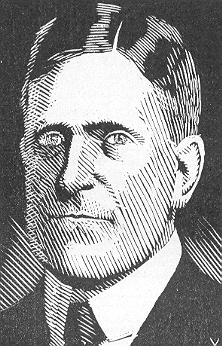
In his report to the 1929 session of the FIDE General Assembly in Venice, Alexander Rueb stated that he would explain orally a complaint by Mieses against Bogoljubow. The affair was decided by FIDE in favour of Mieses. This information appeared on pages 4 and 5 of the minutes of FIDE’s 1929 General Assembly, but the nature of Mieses’ grievance was not indicated. Does any reader know more about it?
C.N. 3928 asked which four-letter word was formed by the initials of the forenames and surnames of these two players:


They are Oscar Panno and Heikki Westerinen, and the pictures came from, respectively, La Scacchiera, October 1953 (page 212) and the plates section of Heikki Westerinen Shakin Mestari by E. Havansi (Heinola, 1969).
The four-letter word is thus whop. No correct answers were received, despite two clues: we wrote that ‘it is likely to mean defeat for many’ and we supplied, in the heading, three-quarters of the answer.
The latest feature article to be posted concerns the mendacity of Eric Schiller.
C.N. 3856 drew attention to the gross historical inaccuracy of the list of title matches at the official website for the ‘FIDE world championship 2005’ in San Luis. We are now glad to see that, notably thanks to the efforts of our correspondent Christian Sánchez (Rosario, Argentina), most of the mistakes have been corrected. Whether many authorities would agree with the way the site chooses to list events of recent years is another question.
We offer here a woeful fact: the last contest which was indisputably for the world chess championship was nearly 15 years ago: Kasparov v Karpov in New York and Lyons.
Below is a game of draughts (checkers) won by H.N. Pillsbury (Black) against B.F. Scully.
1 f6-e5 e3-f4 2 e7-f6 c3-b4 3 f6-g5 d2-e3 4 g7-f6 b4-c5 5 b6-d4 e3-e7 6 g5-e3 f2-d4 7 e5-c3 b2-d4 8 f8-d6 a1-b2 9 a7-b6 b2-c3 10 h6-g5 e1-d2 11 h8-g7 d2-e3 12 g5-h4 c3-b4 13 h4-f2 d4-c5 14 b6-d4 e3-e7 15 f6-g5 g1-e3 16 d8-f6 e3-d4 17 g5-f4 c1-d2 18 g7-h6 b4-c5 19 b8-a7 a3-b4 20 h6-g5 h2-g3 21 f4-h2 d2-e3 22 h2-g1 b4-a5 23 a7-b6 c5-a7 24 c7-d6 a7-b8 25 d6-e5 d4-c5 26 g1-f2. Black wins.
The score is taken from page 176 of The Compleat Draughts Player by Irving Chernev (Oxford, 1981). Chernev stated that Pillsbury’s win was ‘one of 12 games played simultaneously blindfold, and shows his extraordinary skill at piloting the draughtsmen’, but no other details regarding the occasion were provided. What more is known about the game, and are other specimens of Pillsbury’s prowess available?
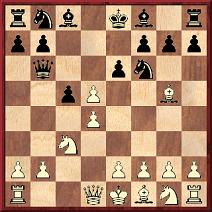
The gambit 1 d4 d5 2 c4 e6 3 Nc3 Nf6 4 Bg5 c5 5 cxd5 Qb6 is named variously after Canal, Venice and Peru, having been played by the Peruvian-born master Canal against Tartakower at the Venice tournament on 15 October 1948.
Tartakower’s annotations to the game on pages 250-255 of the tournament book and pages 54-55 of Esteban Canal by A. Zichichi (Brescia, 1991) indicate that he was surprised by 5...Qb6. That seems understandable enough, but now Richard Forster (Winterthur, Switzerland) has made an intriguing discovery by unearthing the following game on pages 5-6 of Akademisches Monatsheft für Schach, IX. Reihe, Heft 6, January 1911:
Hans Dusold – Tartakower
Hamburg, 19 and 21 July 1910
Queen’s Gambit Declined
1 d4 d5 2 c4 e6 3 Nc3 Nf6 4 Bg5 c5 5 cxd5 Qb6 6 Bxf6 gxf6 7 dxe6 Bxe6 8 d5 Qxb2 9 Qc1 Qxc1+ 10 Rxc1 Bd7 11 Ne4 f5 12 Nxc5 Bxc5 13 Rxc5 Na6 14 Rc4 Bb5 15 Rc2 Rd8 16 Rd2 O-O 17 Nh3 Nb4 18 d6 Bc4 19 a3 Nd5
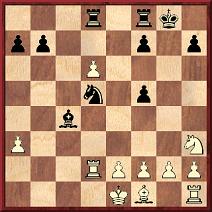
20 e4 Nb6 21 e5 Rfe8 22 f4 f6 23 Bxc4+ Nxc4 24 Re2 fxe5 25 fxe5 Nxe5 26 O-O Rxd6 27 Rfe1 Rde6 28 Nf4 R6e7 29 Kf1 Ng6 30 Ne6 Nf8 31 Nd4 Rxe2 32 Rxe2 Rxe2 33 Kxe2 f4 34 Nb5 a6 35 Nd6 b5 36 Kd3 Ne6 37 Ke4 Kf8 38 Ke5 Ke7 39 h4 Kd7 40 Ne4 Ke7 41 Nf6 a5 42 h5 Kf7 43 Nxh7 b4 44 axb4 a4 45 Ng5+ Nxg5 46 Kd4 Ne4 47 Kc4 Nd6+ 48 Kc5 a3 49 Kxd6 a2 50 White resigns.
So was Savielly Tartakower himself the originator, in 1910, of the gambit which Canal sprang on him in Venice 38 years later? No. Mr Forster points out that the Hamburg game above was played in the Hauptturnier B, and that Black was not ‘the’ Tartakower but his brother Arthur.
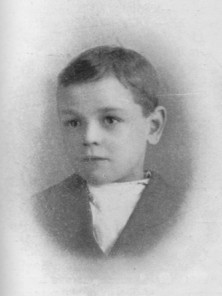
Our Chess Prodigies article includes John Lengden, who was featured on pages 119-120 of the March 1912 BCM. He was born in Manchester on 30 October 1902, and the BCM praised his ‘chess skill of a high order for one so young in years’ and reported that he ‘possesses such a remarkable memory that he can play over any games he contests and can set up any position he has seen’. The following game was given:
John Lengden (Wigan) – J.O. Peacock (Manchester)
Lancashire County tournament (class D), 1911 or 1912
Scotch Gambit
1 e4 e5 2 Nf3 Nc6 3 d4 exd4 4 Bc4 Be7 5 O-O d6 6 h3 Nf6 7 Nxd4 Nxd4 8 Qxd4 c5 9 Bb5+ Bd7 10 Bxd7+ Qxd7 11 Qd3 Rd8 12 Be3 O-O 13 Nc3 a6 14 Rad1 Qc6 15 Rfe1 h6 16 Bf4 Nh5 17 Nd5 Rfe8 18 Nxe7+ Rxe7 19 Be3 Red7 20 Qd2 Qxe4 21 Bxh6 gxh6 22 Rxe4 Kh7 23 Rde1 Nf6 24 Re7 d5 25 Qd3+ Kg7 26 Rxd7 Rxd7 27 Qg3+ Kh7 28 Qe5 Kg7 29 g4 Rd6 30 Qxd6 Resigns.
The game-score was subsequently published on pages 30-31 of Capablanca-Magazine, 15 May 1912, under the title ‘a nine-year-old champion’, and we gave it in C.N. 1171. That was nearly 20 years ago, and nothing further was learned about the boy.
Now, however, Paul Lengden (Chorley, England) informs us that John Lengden was his uncle (being an elder brother of his father, Walter). It is recalled within the family that John Lengden died young, circa 1928-29, having suffered a cycle accident some two years previously. Moreover, Walter believes that John Lengden was chess champion of Oldham and District (Lancashire) in the early 1920s.
Can any reader help build on these leads?
The name of the Hungarian player Zoltán Balla (1883-1945) is often rendered (in contemporary and modern sources, outside Hungary) as Zoltán von Balla. Are both forms correct?
Readers may be interested to see a specimen of his signature, along with those of the 17 other participants in Pistyan, 1912. The illustration is reproduced from volume 3 of Magyar Sakktörténet by G. Barcza and A. Földeák (Budapest, 1989).
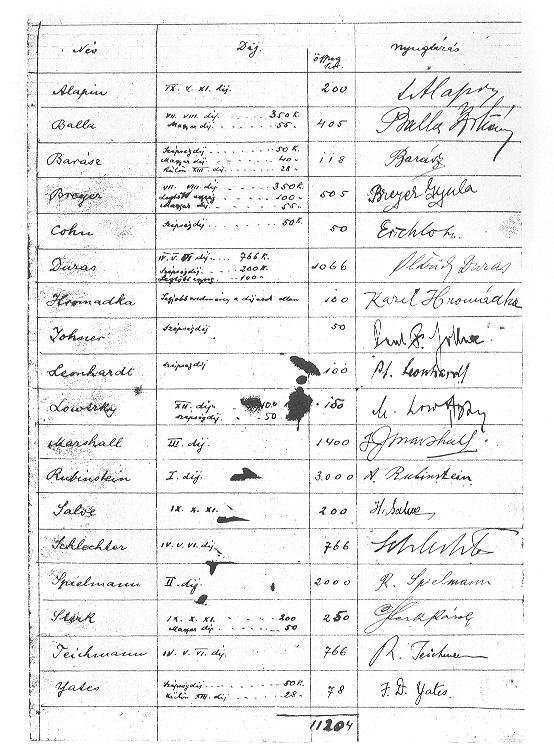
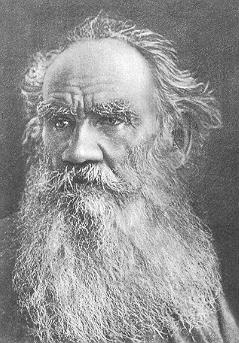
Leo Tolstoy
In C.N. 3225 we commented:
‘It is hard to imagine a more defective area of chess literature than quotations. Writers copy from one another all kinds of unverified or unverifiable phrases without any explanation, context or source.’
Here is a further example. Page 34 of Gladiatoren Ante Portas by Volker-M. Anton and Fritz Baumbach (Magdeburg, 2003) ascribes the following quote to Leo Tolstoy:
‘Ich bedauere jeden, der das Schachspiel nicht kennt. Bringt es schon dem Lernenden Freude, so führt es den Kenner zu hohem Genuss.’
English translation: ‘I pity anyone who has no knowledge of chess. While it already brings pleasure to a student, it is the source of great delight to a connoisseur.’
The book gives no source for this alleged quote. We have also seen it in a number of other German-language outlets, but never with further particulars. The first part of the remark is reminiscent of what Tarrasch wrote in his preface to Das Schachspiel (Berlin, 1931): ‘Ich habe ein leises Gefühl des Bedauerns für jeden, der das Schachspiel nicht kennt ...’ The English translation in The Game of Chess (London, 1935) was: ‘I have always a slight feeling of pity for the man who has no knowledge of chess ...’
What is the correlation between the pieces and figures listed below?
King 9
Queen 5
Rook 8
Bishop 8
Knight 12.
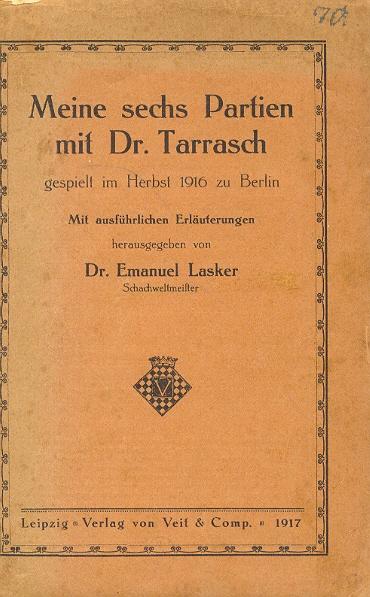
Contrary to claims by Koltanowski, not a world championship match ...
Further to our recent feature article, for the record we firstly reproduce below, from page 160 of Chess Explorations, our complete paragraph regarding Koltanowski’s 1972 book With the Chess Masters:
‘A (relatively brief) selection of examples of general carelessness in With the Chess Masters: Page 9: “Mizowitch” at London, 1922?? Page 10: “Giuco ... Pianisimo”. Pages 15-16: The best part of two pages are devoted to a story of how L. Steiner cheated against Colle at “the Budapest International, 1928”. Neither player was there. Page 48: “Twice Tarrasch mounted a campaign to take the world title from Lasker – and twice Lasker beat him badly.” When was the second time? Page 49: “My first encounter with Dr Tarrasch was in 1924 at the International Chess Tournament in Merano, Italy. I was in my early teens.” Yet he was born in 1903. Page 54: He appears to believe Scotland is in England. Pages 67-68: Another cheating anecdote, according to which Dyckhoff pretended only to have drawn against John at Hanover, 1902, so that his close rival Bernstein would not go for a win against Kagan. Yet Dyckhoff and John did only draw. Page 80 and page 81: “R.F. Mitchell”. Presumably R.P. Michell. Page 90: “James Cross”. Rupert Cross would be correct. Page 92: for (Emanuel) Sapiro read Sapira. Page 100: “Marotzy” (twice). Page 101: “Bekker” (twice). Page 101: Flohr did not play at Carlsbad, 1929. Page 101: “ahead of Reifir, Spielman, Astalosh and the younger Widmar”. Read: a) Rejfíř, b) Spielmann, c) Asztalos, d) Vidmar. Page 101: Alekhine and Euwe did not play at Moscow, 1935 (it is even said that there Menchik “beat Euwe twice!”). Page 141: Rejfíř has a wrong year of birth. And so on...’
As regards Koltanowski’s specific statement ...
‘Twice Tarrasch mounted a campaign to take the world title from Lasker – and twice Lasker beat him badly’
... it may be noted that he made the same mistake when writing about Tarrasch on pages 2-3 of Chess Digest Magazine, March 1969:
‘Dr Emanuel Lasker was his stumbling block – he played two matches for the world title with Lasker and lost both badly.’
Chess Notes Archives:
| First column | << previous | Archives [14] | next >> | Current column |
Copyright 2005 Edward Winter. All rights reserved.